Dear Zazie, Here is today’s Lovers’ Chronicle from Mac Tag. Rhett
The Lovers’ Chronicle
Dear Muse,
© copyright 2020 mac tag/cowboy coleridge all rights reserved
stories, so it is,
if you think so
the pleasure
me, you
the virtue
always searchin’
what we give each other
our own way
bella vita
we know well
full of curiosity
others do not see
as you want me,
as i you
tonight
we seek
till we find
© copyright 2018 mac tag/cowboy coleridge all rights reserved
tutored in the mornin’s,
spent the afternoons
with a wisdom
encrusted cowboy
who told stories
of the old mortality
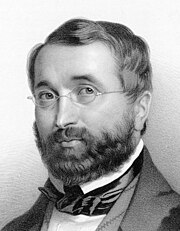
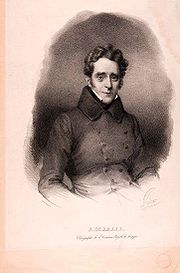
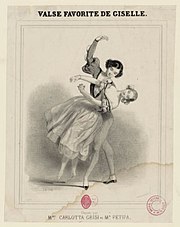





Today is the birthday of Peter Paul Rubens (Siegen, Nassau-Dillenburg (now North Rhine-Westphalia, Germany); 28 June 1577 – 30 May 1640 Antwerp, Spanish Netherlands (now Belgium)); Baroque painter. A proponent of an extravagant Baroque style that emphasized movement, colour, and sensuality, Rubens is well known for his Counter-Reformation altarpieces, portraits, landscapes, and history paintings of mythological and allegorical subjects.
In 1630, four years after the death of his first wife Isabella, the 53-year-old painter married his first wife’s niece, the 16-year-old Hélène Fourment. Hélène inspired the voluptuous figures in many of his paintings from the 1630s, including The Feast of Venus (Kunsthistorisches Museum, Vienna), The Three Graces and The Judgment of Paris (both Prado, Madrid). In the latter painting, which was made for the Spanish court, the artist’s young wife was recognized by viewers in the figure of Venus. In an intimate portrait of her, Hélène Fourment in a Fur Wrap, also known as Het Pelsken, Hélène is even partially modelled after classical sculptures of the Venus Pudica, such as the Medici Venus.
Rubens died from heart failure, which was a result of his chronic gout on 30 May 1640. He was interred in Saint Jacob’s church, Antwerp. The artist had eight children, three with Isabella and five with Hélène; his youngest child was born eight months after his death.

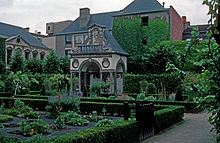









-
Portrait of a Young Woman with a Rosary, Thyssen-Bornemisza Museum, Madrid c. 1609
-

Venus at the Mirror, 1615
-

Infanta Isabella Clara Eugenia (1566–1633), 1615. Kunsthistorisches Museum, Vienna.
-

Virgin in Adoration before the Christ Child, c. 1615
-

Diana Returning from Hunt, 1615 Gemäldegalerie Alte Meister
-

Tiger Hunt, 1617-1618
-

Hippopotamus Hunt (1616). Rubens is known for the frenetic energy and lusty ebullience of his paintings.
-

The Rape of the Daughters of Leucippus, c. 1617
-

Portrait of Marchesa Brigida Spinola-Doria, 1606
-

Portrait of King Philip IV of Spain, c. 1628/1629
-

Portrait of Elisabeth of France. 1628, Kunsthistorisches Museum. Vienna
-

Portrait of Ambrogio Spinola, c. 1627 National Gallery in Prague
-

-

Miracle of Saint Hubert, painted together with Jan Bruegel, 1617
-
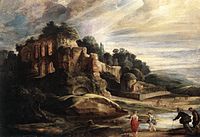
Landscape with the Ruins of Mount Palatine in Rome, 1615
-

Landscape with Milkmaids and Cattle, 1618
-

Nymphs filling the horn of plenty, 1615, together with Jan Brueghel the Elder
-

The Birth of the Milky Way, 1636-1637, Madrid, Museo del Prado
-
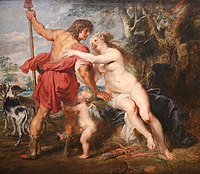
Venus and Adonis
-

Jupiter and Callisto, 1613, Museumslandschaft of Hesse in Kassel
- Marie de’ Medici cycle (1622-1625)
-

Series on Maria de’ Medici; The Flight from Blois
-
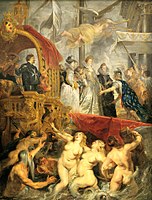
Maria de’ Medici’s arrival in Marseille
-

The Education of the Princess, from the Marie de’ Medici cycle
-
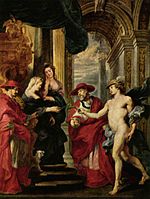
The Negotiations at Angoulême
- Religious paintings
-

The Virgin of the Immaculate Conception, 1626-1628. Madrid, Museo del Prado.
-

The Holy Family 1630, Prado
-

The feast of Herodes
-

King Solomon, 1617
-

The Fall of the Damned, ca. 1620
- Nude
-

Fortuna, 1638
-

Susanna and the Elders, 1608
-

The Triumph of the Virtue 1608
-

Hygeia, 1615. Prague, Lobkowicz Palace.
-

Ermit and sleeping Angelica, 1628
-

Amor and Venus 1614
- Helena Fourment and related pictures
-

Rubens with Hélène Fourment and their son Peter Paul, 1639, now in the Metropolitan Museum of Art
-

Helena Fourment in wedding dress, detalj, the artist’s second wife.ca. 1630, now in the Alte Pinakothek
-

Helena Fourment with a Carriage, 1639 Louvre.
-

Helene Fourment with Rubens and their child, c. 1630
-
Venus and Cupid, 1640
-
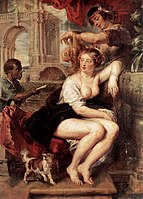
Bathsheba at the Fountain, 1635
-
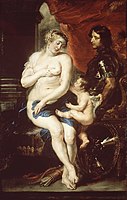
Venus, Mars and Cupid
-

Pastoral Scene, 1636
- Drawings
-

Lion, c.1614-1615. Black and yellow chalk, grey wash, heightened with white
-

Peter Paul Rubens’ son, Nikolas, 1621
-

Isabella Brandt, (first wife of Peter Paul Rubens), 1621
-
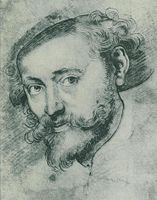
Peter Paul Rubens (Possible self-portrait), c.1620s


Today marks the anniversary of the premiere of Giselle, a romantic ballet in two acts. It was first performed by the Ballet du Théâtre de l’Académie Royale de Musique at the Salle Le Peletier in Paris, France on Monday, 28 June 1841, with Italian ballerina Carlotta Grisi as Giselle. The ballet was an unqualified triumph. Giselle became hugely popular and was staged at once across Europe, Russia, and the United States. The traditional choreography that has been passed down to the present day derives primarily from the revivals staged by Marius Petipa during the late 19th and early 20th centuries for the Imperial Ballet in St. Petersburg.
Librettists Jules-Henri Vernoy de Saint-Georges and Théophile Gautier took their inspiration for the plot from a prose passage about the Wilis in De l’Allemagne, by Heinrich Heine, and from a poem called “Fantômes” in Les Orientales by Victor Hugo.
The prolific opera and ballet composer Adolphe Adam composed the music. Jean Coralli and Jules Perrot created the choreography. The role of Giselle was intended for Grisi as her debut piece for the Paris public. She became the first to dance the role and was the only ballerina to dance it at the Opéra for many years.
The ballet is about a peasant girl named Giselle, who dies of a broken heart after discovering her lover is betrothed to another. The Wilis, a group of mystic and supernatural women who dance men to death, summon Giselle from her grave. They target her lover for death, but Giselle’s great love frees him from their grasp. The Wilis are particularly haunting characters. They are the spirits of virgin girls who died before they married. These creatures were very popular in Romantic era ballets. Led by Myrtha, the Queen of the Wilis, they gain their power in numbers as they effortlessly move through dramatic patterns and synchronized movements, and control the stage with their long tulle dresses and stoic expressions. Although still appearing ethereal, watching the Wilis sweep the stage creates an eerie mood that builds as the ballet continues and they enclose on Albrecht. They are ruthless and hateful of men because they have all died of a broken heart. Giselle finds forgiveness in her heart for Albrecht, but she knows the Wilis will not do the same. Their goal is clear and they are relentless on their quest. The Wilis are one of the most iconic characters in Giselle. They leave an imprint in the viewers mind as they dominate the second act.



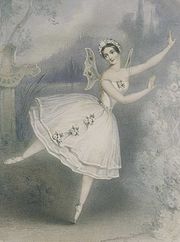



 Today is the birthday of Luigi Pirandello (Agrigento Sicily 28 June 1867 – Rome 10 December 1936 Rome); dramatist, novelist, poet and short story writer whose greatest contributions were his plays. He was awarded the 1934 Nobel Prize in Literature for “his almost magical power to turn psychological analysis into good theatre.” Pirandello’s works include novels, hundreds of short stories, and about 40 plays, some of which are written in Sicilian. Pirandello’s tragic farces are often seen as forerunners of the Theatre of the Absurd.
Today is the birthday of Luigi Pirandello (Agrigento Sicily 28 June 1867 – Rome 10 December 1936 Rome); dramatist, novelist, poet and short story writer whose greatest contributions were his plays. He was awarded the 1934 Nobel Prize in Literature for “his almost magical power to turn psychological analysis into good theatre.” Pirandello’s works include novels, hundreds of short stories, and about 40 plays, some of which are written in Sicilian. Pirandello’s tragic farces are often seen as forerunners of the Theatre of the Absurd.
Following his father’s suggestion, Pirandello married a shy, withdrawn girl of a good family of Agrigentine origin educated by the nuns of San Vincenzo: Antonietta Portulano, in 1894. The first years of matrimony brought on in him a new fervour for his studies and writings. His encounters with his friends and the discussions on art continued, more vivacious and stimulating than ever, despite the complete incomprehension of his wife with respect to the artistic vocation of her husband.
- Così è (se vi pare)
- So It Is (If You Think So)
- Title of play (1916); also translated as It Is So, If You Think It Is.
- So It Is (If You Think So)
- E non le sembra già questa un’opinione?
- Refusing to have an opinion is a way of having one, isn’t it?
- Each In His Own Way, Act I
Mac Tag

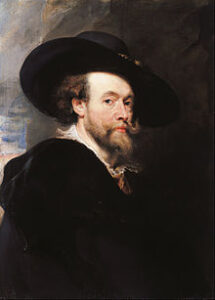
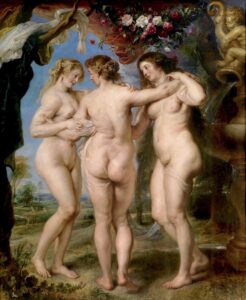
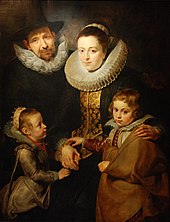


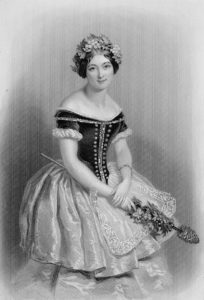

No Comments on "The Lovers’ Chronicle 28 June – stories – art by Peter Paul Rubens – premiere of Giselle – birth of Luigi Pirandello"